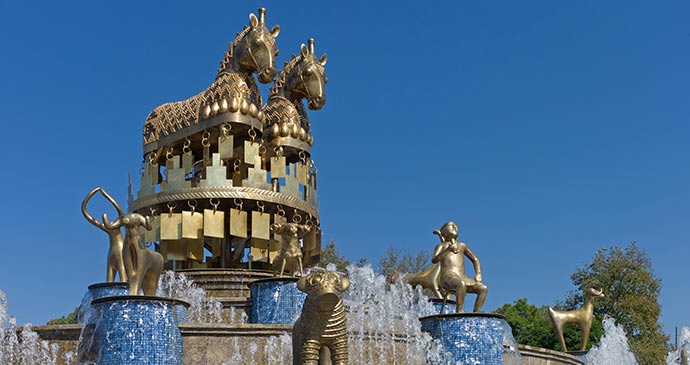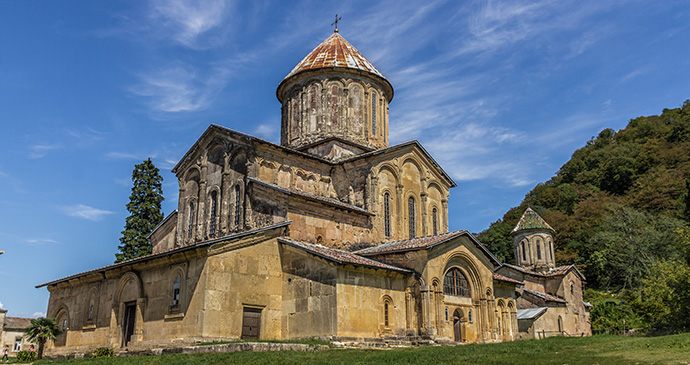Georgia’s second city is the jumping-off point for beautiful monasteries, mountains and prehistoric sites.
Kutaisi dates from perhaps the 17th century BC and was established as the Greek colony of Aia (still the name of the city’s football team) by the 7th century BC; it was the capital of Colchida (and thus the birthplace of Medea) from the second millennium BC, and from AD978 to 1122 capital of the united Georgia, Tbilisi being occupied by the Turks.
It was again capital of Imereti from the late 15th century to 1810. Kutaisi was spared by the Mongols, but was burnt by the Turks in 1510, 1666 and in 1692; they were driven out in 1770 by Solomon I.
Under communism it grew to be a city of 240,000, but its main employer, the Kamaz truck factory, soon closed and the city became the mafia capital of Georgia and perhaps the whole former Soviet Union.

It has long since been cleaned up and may be revived by the National Parliament moving to Kutaisi, although little actually happens in the flashy new building other than voting; the real work is apparently still done in Tbilisi. Its population has now dropped to 150,000, a couple of thousand fewer than Batumi.
The city’s great sight is the Bagrat Cathedral. It was commissioned by Bagrat III in 1003 as a huge triconch cruciform church with a central dome. The cathedral was destroyed in 1691–92 by the Turks, leaving it roofless; it was disused, but immensely impressive, until 2008, when President Saakashvili launched a controversial plan to restore it as a working church. UNESCO, which had placed it on its World Heritage List in 1994, was very opposed to this (along with many other people and bodies) and in 2010 placed it on its list of World Heritage Sites in Danger.
However, Saakashvili pressed on, owing to its importance as a symbol of national unification having been built by the first ruler of a united Georgia. The restoration is now complete, with a horrid green roof and a modern tower discreetly added on the north side, and UNESCO has now removed the cathedral from the World Heritage List.

There are other interesting churches to the east of the centre, such as the Church of the Annunciation of the Virgin. This is a Georgian Orthodox church, with an interior that seems at odds with its Baroque exterior and Latin inscription.
It is worth making the excursion from Kutaisi to Gelati. Wonderfully set in the hills just to the north of Kutaisi, the monastery of Gelati is one of the most beautiful spots in Georgia. The centrepiece is the great Cathedral of the Virgin, built by King David the Builder in 1106–25 (though in a style typical of the 11th century).
Burnt by the Turks in 1510, and by the Lesghians (from the north Caucasus) in 1579, it was restored, then closed under communism, and reopened in 1988. The interior is full of light, and painted in fantastic colours (although a blue background is unusual in Georgian churches).